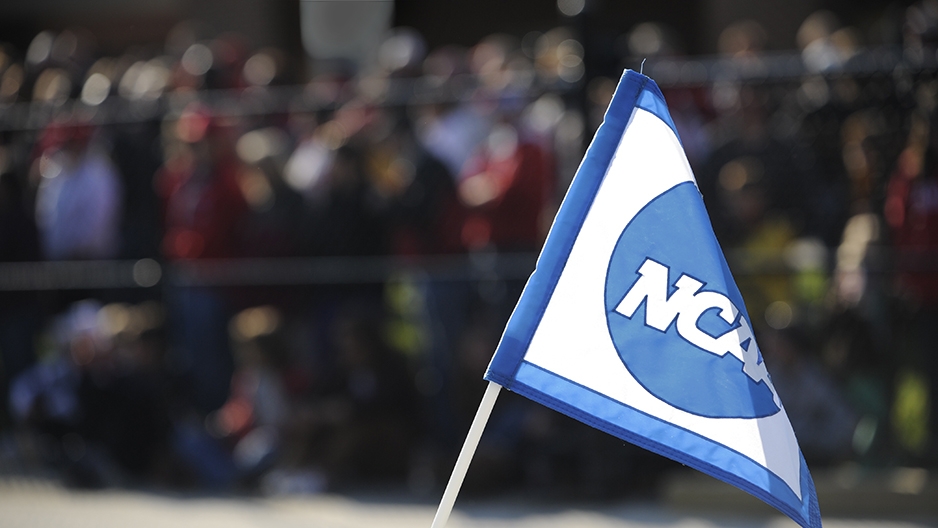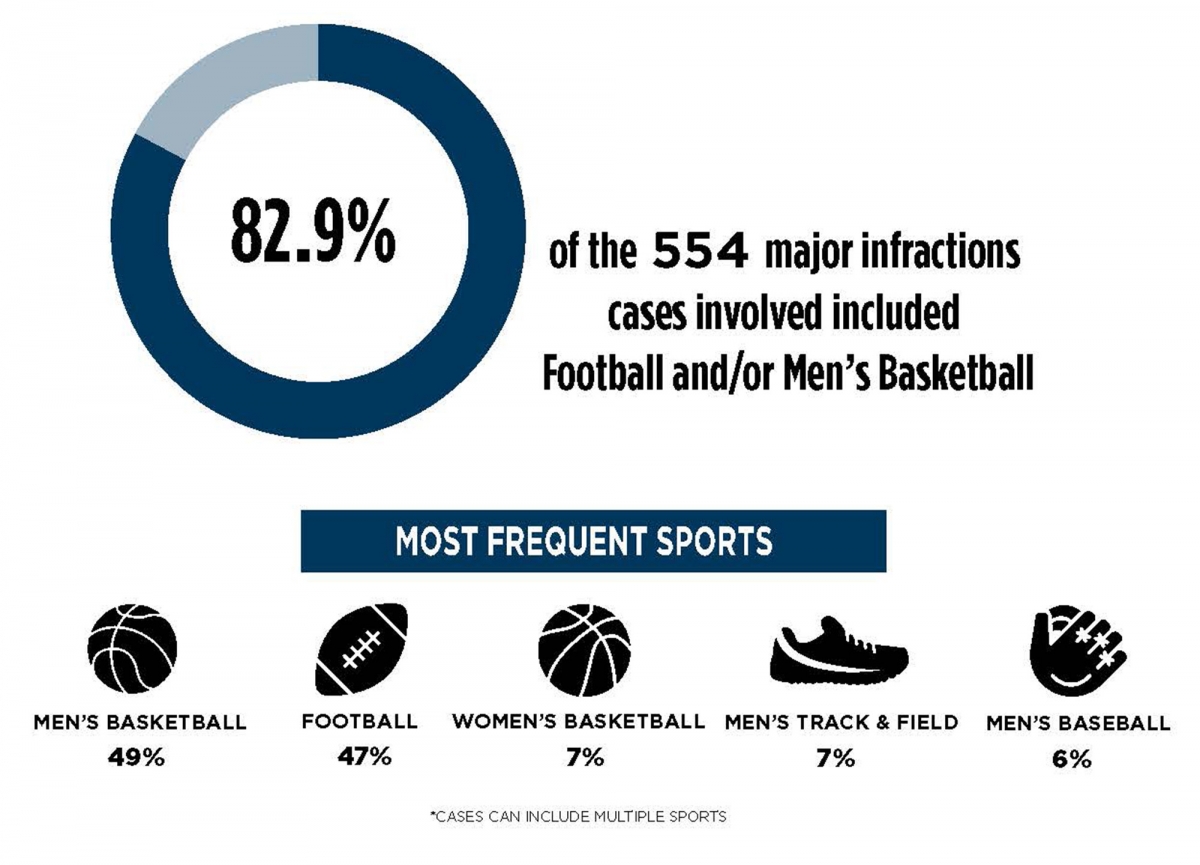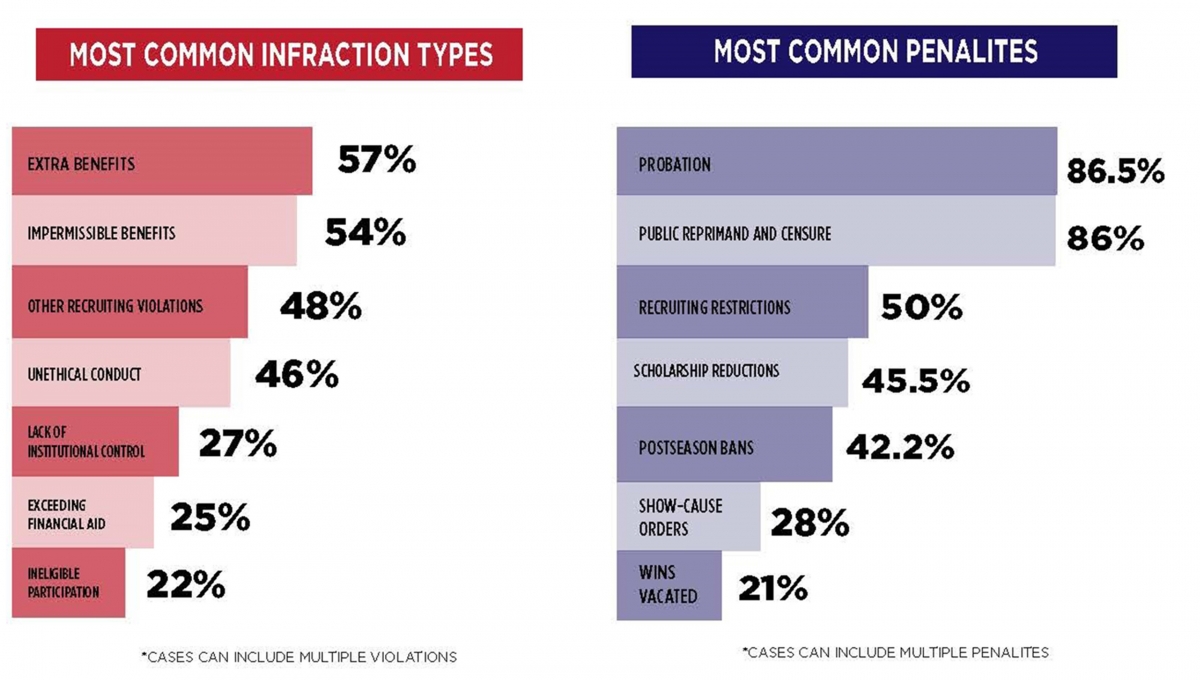Temple study examines penalty consistency of NCAA infractions
Among findings: Conference membership generally has no influence on severity of penalties

Temple University’s Sport Industry Research Center took on a daunting task: analyzing all major NCAA infractions cases over a 61-year period. What did they find? Perhaps the most complete view of major NCAA infractions over time, examining the outcomes of each case.
Temple researchers analyzed 554 Division 1 major infractions decisions dating back to 1953. Trends and relative consistency of penalties prescribed by the NCAA Division I Committee on Infractions were examined, and sources of variance in penalty severity were identified.
The study reviewed cases under the previous infractions structure—major/secondary violations vs. tiered violation structure—and serves as a baseline for the NCAA to evaluate its new four-tiered violation structure and penalty matrix, which became effective in August 2013.
According to the study, NCAA conference membership generally has no influence on the severity of penalties issued when schools are found responsible for violating NCAA rules.
While the majority of penalties have been consistent over the years, the study acknowledged that there is inter-case variation. Cases that differ in type and severity of infractions should also differ in type and magnitude of punishment.
“This study is important in understanding the degree of consistency exhibited by the Committee on Infractions when prescribing penalties against member schools. It represents the first study that has reviewed all major infractions cases for Division I prior to the implementation of the new penalty structure,” said Jeremy Jordan, director of Temple’s Sport Industry Research Center and report co-author with Daniel Funk, director of research for Temple’s School of Sport, Tourism and Hospitality Management.
Over time, the researchers found that penalties prescribed under the former NCAA infractions structure have included longer probationary periods, shorter postseason bans and greater scholarship reductions. Financial penalties have also become more common over time, including 21 percent of cases between 1999 and 2012 and 40 percent of cases since 2013.


Other main findings from the report include:
- Of the 554 Division I major infractions cases reviewed for the study, 459 (82.9 percent) involved football and/or men’s basketball.
- Most major infractions cases (84 percent) involved violations by coaches.
- The top four most common infraction types are recruiting inducements, impermissible benefits, other recruiting violations and unethical conduct.
- Probation was a prescribed penalty in 86.5 percent of all major infractions cases, with a two-year probation penalty being the most common time period. Postseason bans (42.2 percent) and scholarship reductions (45.5 percent) were also commonly prescribed penalties.
- Autonomy conferences—which account for nearly 40 percent of all major infractions cases—are not systematically punished differently than schools from other conferences in length of probation. However, in cases that involve football, autonomy conference membership is associated with a longer postseason ban.
- When examining all major infractions cases and cases that do not involve football or men’s basketball, membership in an autonomy conference is associated with greater scholarship reductions.
“It is important for us as a committee to be able to ensure all schools and individuals are being treated fairly as we determine the facts of a case and what penalties are appropriate,” said Greg Sankey, Committee on Infractions chair and commissioner of the Southeastern Conference. “The results of this study show that members of the Committee on Infractions have taken their roles seriously and worked to address each case on its own merits, while ensuring consistency in prescribing penalties. Moving forward, this study will help us as we continue to review and revise the existing infractions structure and penalty matrix.”
The NCAA’s Committee on Infractions includes representatives from member schools, conferences and the public, including university presidents, conference commissioners, campus administrators, faculty athletics representatives and former coaches. The committee prescribes penalties; schools can self-impose them.
The study was researched independently by Temple’s Sport Industry Research Center and funded by the NCAA.
The full report, titled NCAA Division I Committee on Infractions: Penalty Consistency, is available online at the School of Sport, Tourism and Hospitality Management’s website.

